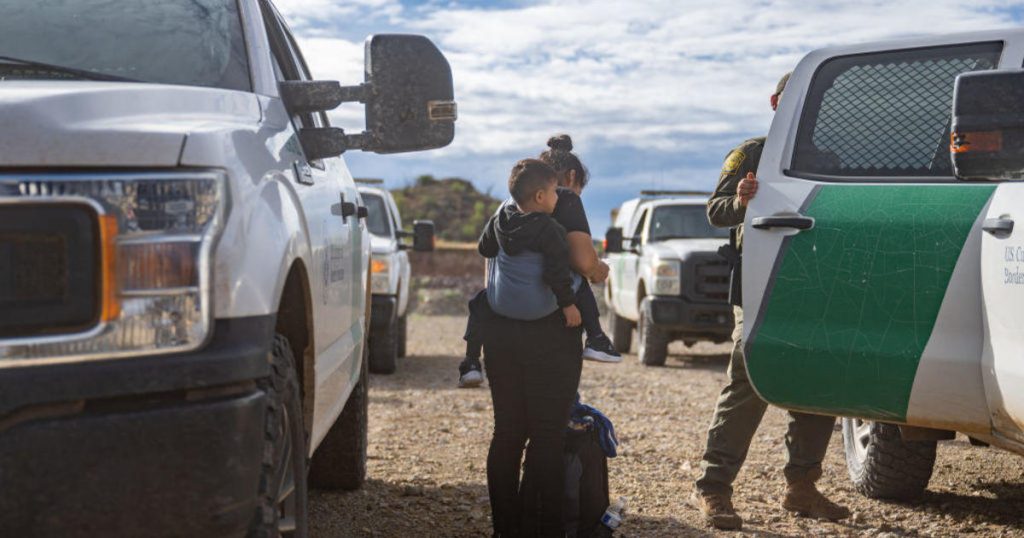Border crossings at the U.S. southern border have decreased for the fifth consecutive month in July, reaching the lowest level since 2020. U.S. Border Patrol agents apprehended fewer than 60,000 migrants between official points of entry, marking a significant decline from the peak in December 2020, when 250,000 apprehensions were reported. This downward trend in illegal immigration has been ongoing this year, with numbers decreasing each month since February, according to government figures. The Biden administration has implemented measures that have contributed to this reduction, including restrictions on access to the asylum system and increased enforcement efforts.
The drop in border crossings in recent weeks has been attributed to a proclamation issued by President Biden in June, which restricted access to the U.S. asylum system. Homeland Security Secretary Alejandro Mayorkas credits the administration’s actions for the decline, noting that cutting out smugglers and enforcing stricter asylum policies have deterred migrants from attempting unauthorized crossings. Other factors, such as Mexican officials cracking down on migrants and extreme weather conditions, have also played a role in reducing migration to the U.S. border. The daily average of illegal crossings is nearing the threshold set by the Biden administration to deactivate the asylum crackdown, signaling progress in border security efforts.
President Biden’s proclamation in June has effectively halted asylum processing between ports of entry, making it easier for immigration officials to return migrants to Mexico or their home countries if they enter the U.S. illegally. This policy change has led to a decrease in the number of migrants released into the U.S., viewed as a pull factor for migration. Under the new rules, migrants are no longer asked about fear of harm if deported, and asylum interviews are held to higher standards. Unaccompanied children and vulnerable groups are exempted from these restrictions, and migrants from countries where deportations are infrequent are less affected.
The administration’s decision to restrict asylum unilaterally follows the collapse of a bipartisan border security agreement earlier this year, as Congress failed to act due to political reasons. While the administration credits the executive action for reduced illegal immigration, critics argue that it violates U.S. asylum law and is driven by political motives. Despite criticisms, Mayorkas emphasizes that lawful pathways for migration exist, and the administration has created programs for legal entry into the U.S., such as the border appointment system and special policies for specific groups. Asylum restrictions are expected to continue regardless of the election outcome, with Vice President Harris likely to uphold them if elected.
Overall, the decline in border crossings along the U.S.-Mexico border in recent months can be attributed to a combination of factors, including policy changes, enforcement efforts, and external conditions. The Biden administration’s measures to restrict asylum and enhance border security have led to a significant decrease in illegal immigration, with apprehension numbers dropping to the lowest level in almost a year. While these actions have faced criticism from some quarters, they are seen as necessary for maintaining border integrity and ensuring safety for migrants. The ongoing debate over asylum restrictions and border policies is likely to persist regardless of political outcomes, reflecting the complex challenges associated with managing migration at the U.S. southern border.


